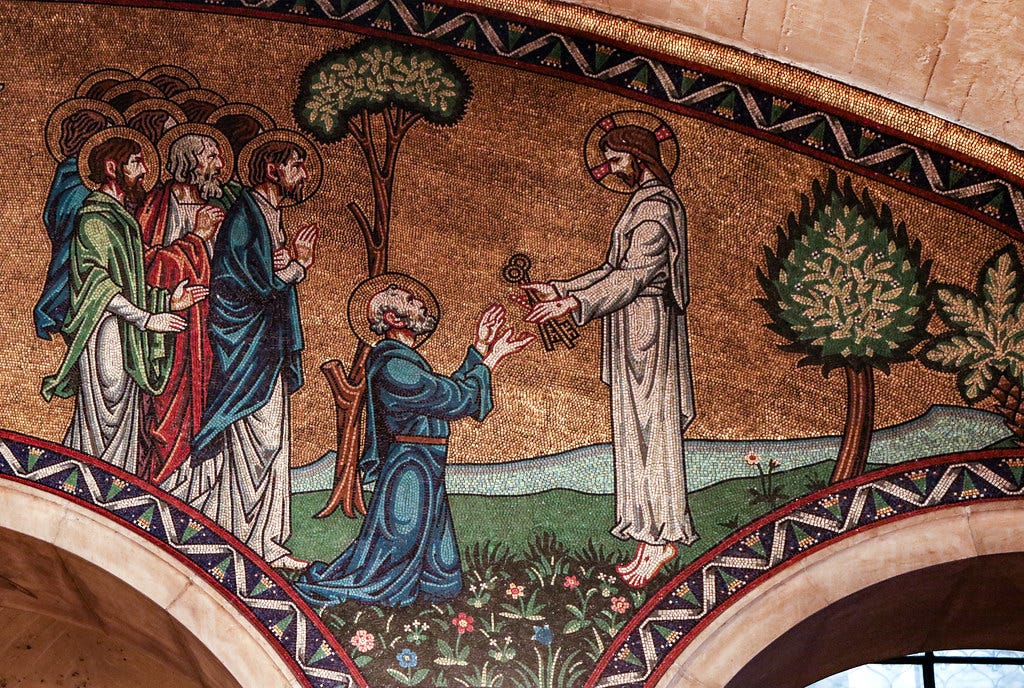Introduction
Almost ninety years ago, Fr Joseph Cardijn addressed the delegates of the first International Congress of the Young Christian Workers, which took place in Brussels. In his address, he described the three truths, which he named as the Truth of Faith, the Truth of Experience and the Truth of Method.
He described the Truth of Fatih as the two-fold destiny of all young workers: both temporal and eternal destiny. As he said to the assembly:
The eternal destiny of each human being is incarnate, develops, and is achieved in temporal life always and everywhere – on earth as it is in heaven.
As you reflect on the Gospel presented in this Enquiry, recognise in it, as in every Gospel scene, the Truth of Faith. No doubt, you will recognise in Peter’s interaction with Jesus, the Truth of Experience, which Fr Joseph Cardijn described as “the terrible contradiction” between the work experiences of workers and their eternal destiny.
Cardijn gave a number of perspectives of the Truth of Method in his address. Here is just one of them:
An organisation for the transformation of their life, their environment, a conquest of the masses with a view to their eternal and temporal destiny – with a view to their destiny which is at once double and unique.
The method - Cardijn saw the Movement he worked to establish around the world as the embodiment of the Truth of Method - is activated through the use of See, Judge and Act as the way to transform people and society.
May this Gospel Enquiry be an opportunity to experience the Three Truths.
The Gospel
When Jesus came to the region of Caesarea Philippi he put this question to his disciples, ‘Who do people say the Son of Man is?’
And they said, ‘Some say he is John the Baptist, some Elijah, and others Jeremiah or one of the prophets.’
‘But you,’ he said ‘who do you say I am?’
Then Simon Peter spoke up, ‘You are the Christ,’ he said, ‘the Son of the living God.’
Jesus replied, ‘Simon son of Jonah, you are a happy man! Because it was not flesh and blood that revealed this to you but my Father in heaven. So I now say to you: You are Peter and on this rock I will build my Church. And the gates of the underworld can never hold out against it. I will give you the keys of the kingdom of heaven: whatever you bind on earth shall be considered bound in heaven; whatever you loose on earth shall be considered loosed in heaven.’ Then he gave the disciples strict orders not to tell anyone that he was the Christ.
From that time Jesus began to make it clear to his disciples that he was destined to go to Jerusalem and suffer grievously at the hands of the elders and chief priests and scribes, to be put to death and to be raised up on the third day.
Then, taking him aside, Peter started to remonstrate with him. ‘Heaven preserve you, Lord;’ he said ‘this must not happen to you.’
But he turned and said to Peter, ‘Get behind me, Satan! You are an obstacle in my path, because the way you think is not God’s way but man’s.’ (Matthew 16:13-23)
The Enquiry
See
What happens in this scene from Matthew’s Gospel? Which elements can be found elsewhere in the Gospel?
What do you learn from this Gospel about the views people have about Jesus? Focus on Peter’s interaction with Jesus. What do we learn about Peter’s worldview from his interaction with his leader?
Why does Jesus continue with his mission despite the opposition and misunderstanding he experiences from the Jewish authorities and from his followers?
Judge
What do you make of this interaction between Jesus and his apostles, especially Peter? Is human existence really about the battle between good and evil? And if you were to prepare a report on the Church today, how would it fare if measured by what Jesus said about it in this Gospel?
In an ideal world, how would Christians respond to what Jesus shares with his apostles in this Gospel?
Which part of this Gospel challenges you to re-think your view of yourself in the Church and in the world?
Act
So, what do you want to change in yourself and in the world?
What small action can you carry out that will contribute to the change you want to see?
Who can you involve in your action, when, where and how often?
Image Source: Fr Lawrence Lew, OP (Creator), Mosaic from St Peter’s Chapel in the crypt of Westminster Cathedral, London, Flickr, CC BY-NC-ND 2.0
Worth reading: Cardijn, J. (2020). Challenge to Action: Forming Leaders for Transformation. This is a collection of Cardijn’s lectures (one of which is used in this Gospel Enquiry), originally translated into English by Fr Eugene Langdale and updated by Dr Stefan Gigacz. You may obtain a copy here. If you choose to download it, please consider making a donation to the Joseph Cardijn Digital Library to support its further development.


